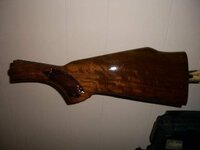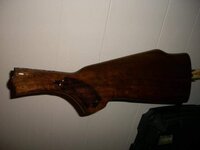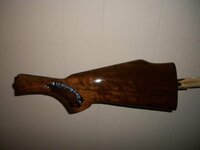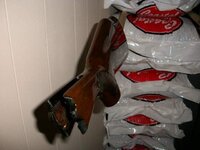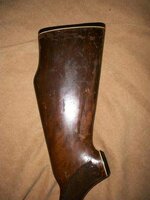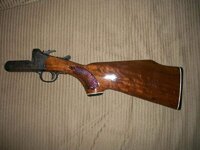Try some soaking some Kroil on the blued barrel overnight. It will work wonders on the light rust. The case coloring looks good to go.
I would use an orange citrus paint stripper and Birchwood Casey Tru-Oil on the stock.
Try sprucing it up yourself, it's worth a try.
I would use an orange citrus paint stripper and Birchwood Casey Tru-Oil on the stock.
Try sprucing it up yourself, it's worth a try.






